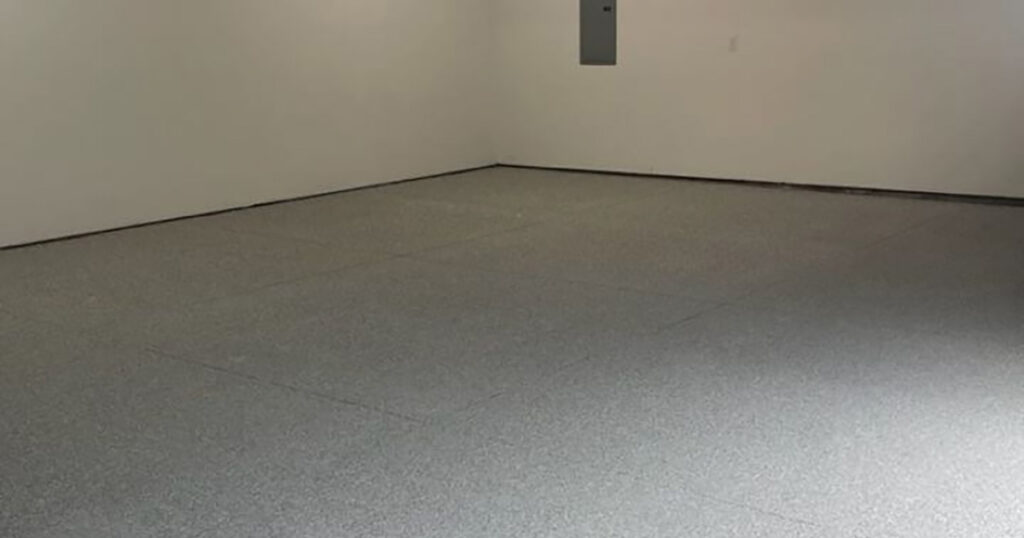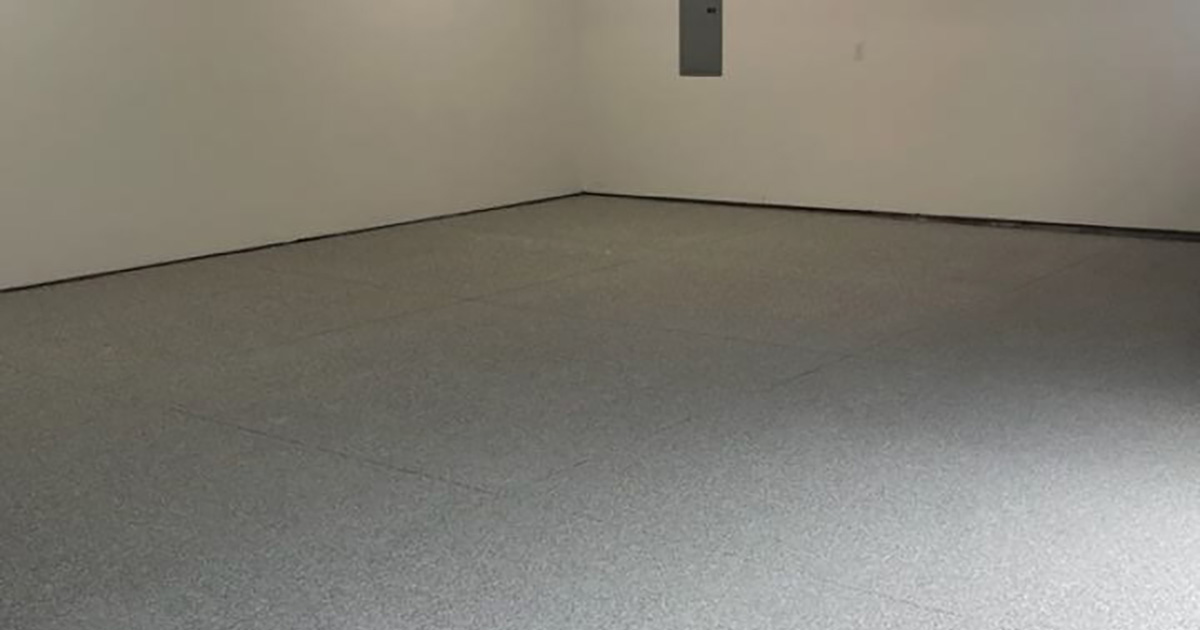Epoxy coatings are a vital component in maintaining the durability and aesthetic appeal of various surfaces, particularly floors. Utilizing the expert concrete coatings services of LYNX Concrete Coatings, you can ensure a flawless application and premium quality in every layer. This protective layer not only enhances the appearance of your space but also extends the lifespan of the underlying material. However, to ensure the longevity and effectiveness of these coatings, proper maintenance and care are crucial. This article will guide you through the essentials of understanding epoxy coatings, their benefits, and the best practices for their upkeep. Whether you’re a homeowner, a business owner, or a professional in the field, you’ll find valuable insights to help you maximize the potential of your epoxy-coated surfaces.
Understanding Epoxy Coatings
Epoxy coatings have become a popular choice for those seeking a durable, attractive, and long-lasting solution for floor surfaces. This comprehensive guide will explore the world of epoxy coatings, providing insights into their composition, benefits, and the best practices for their upkeep. Additionally, we will delve into the process of identifying and repairing damages, and offer guidance on when to enlist the expertise of professionals.
What are Epoxy Coatings?
Epoxy coatings are a specialized form of concrete floor finish, created from a blend of two components – resins and hardeners. When these two elements interact, they create a robust, rigid material that is highly durable. Once applied, these coatings create a sleek, glossy finish on the concrete surface, boasting impressive adhesion and resistance capabilities. Epoxy coatings are renowned for their resilience against high foot and vehicle traffic, exposure to chemicals and heat, and general wear and tear. This makes them a preferred choice for a variety of settings, from residential garages to commercial spaces like warehouses, factories, kitchens, and hospitals.
Benefits of Epoxy Coatings
Epoxy coatings bring a wealth of advantages to the table, making them a favored choice for many. Their exceptional durability is a standout feature, providing resistance to common damages such as chipping, cracking, and staining.
The seamless and non-porous nature of epoxy coatings simplifies the cleaning process. This smooth surface repels dirt, oil spills, and bacteria, ensuring a clean and hygienic environment.
The reflective quality of epoxy enhances room brightness, potentially lowering energy consumption. Safety is another key advantage. The incorporation of specific aggregates can enhance slip resistance, while the coating’s high resistance to heat and fire can limit damage in the event of a fire.
Epoxy coatings also score high on design flexibility. With a broad spectrum of colors and the option to add decorative chips, you can create a unique aesthetic.
Finally, the environmental impact of epoxy coatings is minimal. They emit low levels of volatile organic compounds (VOCs) during application and throughout their lifespan, making them a sustainable flooring solution.
Maintenance Practices for Epoxy Coatings
Maintaining the longevity and visual appeal of your epoxy coatings is intrinsically linked to effective upkeep. While epoxy coatings are generally low-maintenance compared to other flooring types, certain practices can enhance their durability and luster.
Regular cleaning is crucial to keep dirt and stains at bay. Additionally, prompt and appropriate handling of accidental spills or stains can prevent lasting damage. Regular and thorough inspections also play a vital role in maintaining the integrity of your epoxy-coated floors.
In the following sections, we will explore these maintenance practices in detail, providing you with practical tips and techniques to keep your epoxy coatings in top-notch condition.
Regular Cleaning
The key to extending the life of your epoxy-coated floors lies in consistent cleaning. Even though these surfaces are known for their resistance to dirt and grime, neglecting regular cleaning can lead to a dull and lackluster appearance over time.
A dust mop or a soft indoor broom is your best friend when it comes to daily or bi-daily cleaning, depending on the foot traffic and usage of the space. Opting for a dust mop over a traditional broom can help avoid scratches and reduce wear on the epoxy coating.
In addition to sweeping, a weekly wash is recommended. This can be achieved using a hard foam mop along with a blend of warm water and a gentle, neutral detergent. Steer clear of soap-based cleaners or acid-based cleaning agents, as they can leave behind residues or even inflict damage to the floor.
After washing, it’s wise to rinse the floor with fresh water and let it air dry. Alternatively, you can use a towel or a squeegee to dry the floor and prevent water spots. Be mindful of heavy equipment or furniture that could potentially scratch or dent the coating. It’s a good practice to use rubber-wheeled equipment and attach protective pads to the base of heavy furniture.
By adhering to these regular cleaning practices, you can ensure your epoxy-coated floors remain visually appealing and durable for years to come.
Handling Stains and Spills
Even with the robust stain-resistance of epoxy coatings, spills are inevitable. The secret to managing spills effectively is prompt action.
Regardless of whether the spill involves oil, grease, or a colorful liquid, immediate cleanup is crucial. The longer the spill is left unattended, the greater the risk of it staining or seeping into any minute unsealed areas. For quick cleanup, a soft, absorbent cloth or paper towel will do the trick.
For oil or grease spills, a gentle degreaser can come in handy. Apply it to the affected area and gently scrub with a soft-bristle brush. Following this, rinse the area thoroughly with warm water and dry it using a clean mop or towel.
It’s important to avoid harsh chemical cleaners that could harm the epoxy surface. Always test your cleaning solution on a hidden area first to ensure it won’t discolor or damage the coating.
For persistent stains, a soft-bristle scrubbing brush can be used. However, remember to scrub gently to avoid scratching your flooring.
By promptly addressing stains and spills, you can keep them from becoming a permanent fixture on your epoxy-coated floors.
Repairing Damages on Epoxy-Coated Floors
Even the most robust epoxy-coated floors can show signs of wear and tear over time. Factors such as heavy loads, sharp objects, or chemical spills can lead to chips, cracks, or stains that mar the beauty and functionality of your floors. Early detection and timely repair of these damages can not only restore the aesthetic appeal of your floors but also extend their lifespan. In the following sections, we’ll delve into the process of detecting damages and the steps required for effective repair.
How to Identify Damages
Early detection of damages on your epoxy-coated floors is key to preserving their durability and visual appeal. Damages can occur due to a variety of reasons, including heavy impact, abrasion, or prolonged exposure to harmful chemicals.
Cracking is one of the first signs of damage. These cracks may initially appear small and hard to spot, but if left unattended, they can rapidly spread across the floor. Be vigilant for any lines or gaps on the surface of your floor.
Chipping is another common form of damage. This typically occurs when heavy objects fall onto the floor, leading to a section of the coating breaking off. Keep an eye out for areas where the coating appears to be missing or feels different to the touch.
Discoloration or stains can also indicate damage. While epoxy floor coatings are designed to resist staining, continuous exposure to certain chemicals can cause discoloration over time.
Peeling or delamination is a severe form of damage where the epoxy coating begins to separate from the underlying concrete. This could be a result of a weak bond between the epoxy and the floor during installation or due to moisture exposure over time.
To spot these damages, conduct regular inspections, particularly in high-traffic areas or locations where heavy machinery is used.
Once you’ve identified any damages, it’s crucial to take immediate action to repair them, preventing further deterioration. The specific steps for this process will be discussed in the subsequent section.
Steps for Repairing Damages
When damage occurs on your epoxy-coated floors, prompt and strategic action is crucial. Here’s a step-by-step guide to help you navigate the repair process:
1. Clean the Damaged Zone: Initiate the repair process by thoroughly cleaning the affected area. Eliminate any traces of dust, dirt, or residue. A vacuum cleaner can be a handy tool for this task.
2. Evaluate the Damage: The next step involves assessing the damage. Minor defects like chips and cracks can be filled and sealed, while more substantial damages, such as peeling, may necessitate a more comprehensive repair strategy.
3. Ready the Damaged Area: For significant damages like peeling or large chips, you may need to employ a grinder or a similar tool to eliminate the loose epoxy around the damage, ensuring a smooth and even surface.
4. Employ Epoxy Patch: For minor chips and cracks, an epoxy patching compound can be a viable solution. Follow the manufacturer’s guidelines to mix the compound and fill the damaged areas using a putty knife or a similar tool. Make sure the patching compound aligns with the rest of the floor for a seamless repair.
5. Reapply Epoxy Coating: In the case of severe damage like peeling, a fresh layer of epoxy coating will need to be reapplied once the area is adequately prepared. Adhere to the manufacturer’s guidelines for mixing and applying the epoxy.
6. Allow for Curing: Post-repair, it’s crucial to let the floor cure as per the coating manufacturer’s recommendations. This duration can vary based on the product used, but it typically spans several days.
Bear in mind that repair procedures can differ based on the specific epoxy product initially used and the extent of the damage. Always adhere to the manufacturer’s guidelines, or seek professional advice if the damage is extensive.
Seeking Professional Help for Epoxy Coatings
While you can handle routine maintenance and minor repairs on your own, there are instances when professional intervention becomes necessary to maintain the longevity of your epoxy flooring. Whether it’s intricate repair work or regular professional maintenance, experts in the field can offer efficient services with assured results. Here, we’ll discuss when you might need professional help and what to expect when you opt for such services.
When to Consult Professionals
While epoxy-coated floors are generally easy to maintain, there are circumstances when professional intervention becomes necessary. Here are a few scenarios where you might need to consider expert assistance:
Significant Damage: If your epoxy flooring suffers from extensive damage, such as widespread peeling or chipping, a simple DIY repair might not suffice. Professionals possess the necessary tools and knowledge to effectively address such severe damages.
Areas with Heavy Foot Traffic: Epoxy floors in high-traffic zones, like commercial establishments or bustling garages, endure more wear and tear. These areas might need professional maintenance to ensure the longevity and appearance of the flooring.
Complex Designs: Floors with intricate epoxy patterns or designs can pose a challenge when it comes to repairs. Professionals have the expertise to preserve these details without disrupting the overall aesthetics.
Reapplication of Protective Coating: At times, the protective top coat of your epoxy floor might need reapplication to maintain its gloss and shine. This task requires professional handling for a flawless, even finish.
Lack of Tools or Experience: If you’re not equipped with the right tools or lack experience in handling epoxy floor repairs and maintenance, it’s wise to hire a professional. This can prevent further damage and save you time and effort.
Remember, timely professional intervention can prevent minor issues from escalating into major problems, saving you significant time, effort, and money in the long run.
Expectations from Professional Services
Engaging professional services for the upkeep or repair of your epoxy-coated floor comes with certain expectations. Here’s what you should anticipate:
Thorough Assessment: Professionals will initially examine the condition of your epoxy flooring, pinpoint damages, and gauge the extent of repairs needed. This detailed inspection ensures no issue goes unnoticed.
High-Quality Repairs: Armed with the right tools and advanced skills, professionals can address all types of damages. They can restore your floor to its original state, ensuring the repairs blend seamlessly with the existing surface.
Proper Procedure: Professionals adhere to the correct repair procedure, which includes cleaning, surface preparation, repair material application, and adequate curing time.
Preventive Measures: Besides addressing existing issues, professionals also offer preventive solutions to avert future damages.
Maintenance Advice: Post-repair or maintenance, professionals will provide guidance on maintaining your epoxy floor in your specific environment, thereby enhancing its lifespan.
Work Guarantee: Most professional services offer a warranty or guarantee for their work, assuring you of the durability and reliability of the repair.
Prompt Service: Professional epoxy repair and maintenance services can save you considerable time and inconvenience. They perform the repairs swiftly and efficiently, reducing the downtime of the space.
Investing in professional help not only ensures the longevity and aesthetic appeal of your epoxy-coated floors but also maximizes the return on your flooring investment.
1. What processes are involved in maintaining epoxy coatings on floors?
Maintaining epoxy coatings involves regular cleaning with a damp mop and mild detergent. Incorporating sweeping or vacuuming in the cleaning schedule can help get rid of abrasive particles that could scratch the coating.
2. How often should epoxy-coated floors be maintained?
Epoxy-coated floors should be maintained according to their usage frequency. For high-traffic areas, daily sweeping or vacuuming and mopping once a week is recommended. Spills should be wiped immediately to prevent staining.
3. Can waxes or polishes be used on epoxy coatings?
No, using waxes or polishes on epoxy-coated floors can cause buildups. These solutions may also make the surface slippery and compromise its safety. Instead, use a simple solution of water and mild detergent for cleaning.
4. How does one handle tough stains on epoxy coatings?
For stubborn stains on epoxy-coated floors, scrub gently using a soft brush and mild detergent. Avoid using highly abrasive materials or harsh chemicals that may damage the epoxy coating.
5. Is reapplication of epoxy coating recommended during maintenance?
Reapplication of epoxy coating is not always necessary during regular maintenance, unless there is visible wear and tear or damaged areas. Consult a professional in case of significant damage for a possible re-coating.
6. Can heavy equipment damages epoxy coatings?
Although epoxy coatings are highly durable, heavy equipment or sharp objects can cause scratches or chips. Where such activities are unavoidable, use protective mats or pads to prevent damage.



